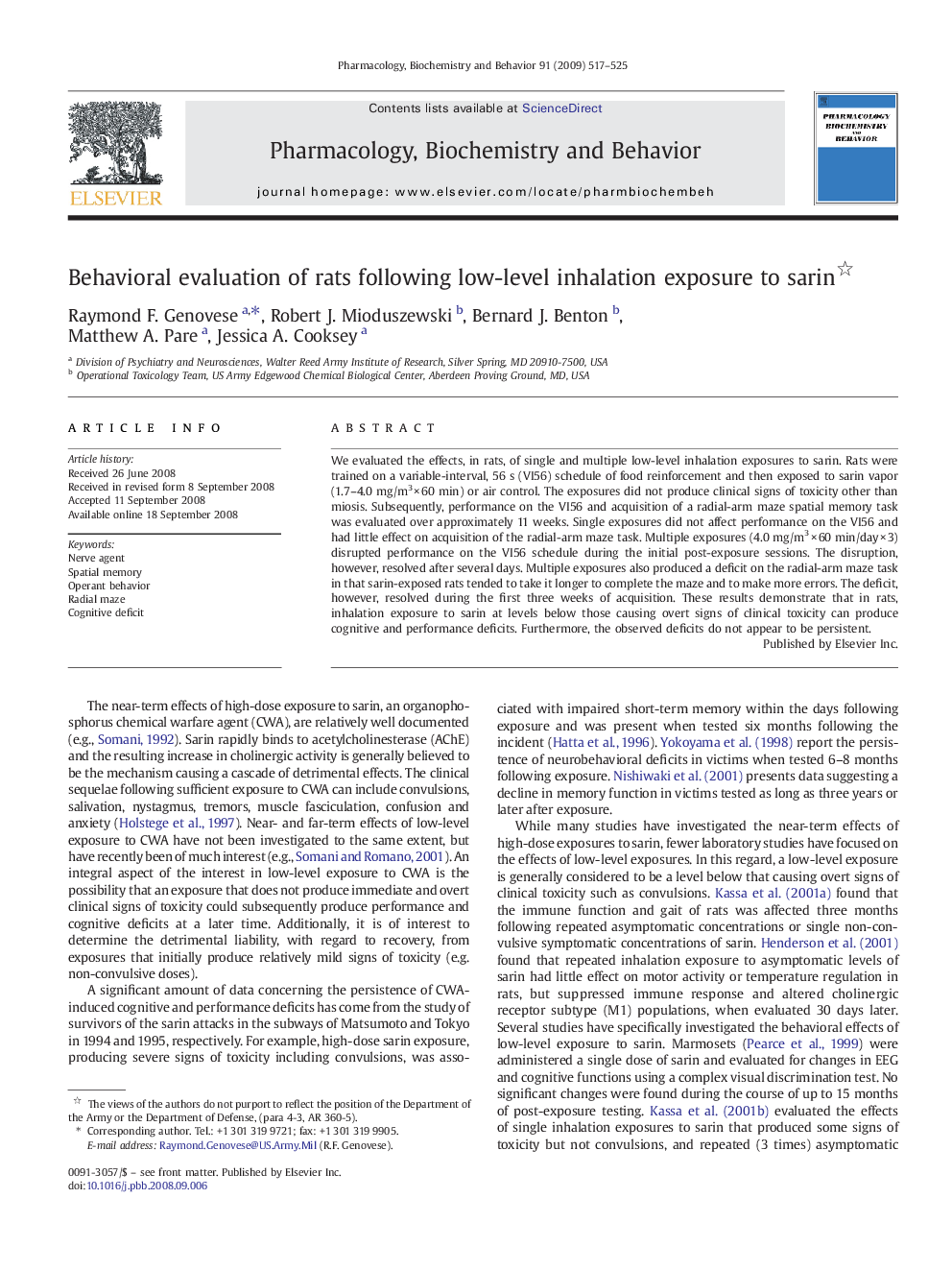| Article ID | Journal | Published Year | Pages | File Type |
|---|---|---|---|---|
| 2014023 | Pharmacology Biochemistry and Behavior | 2009 | 9 Pages |
Abstract
We evaluated the effects, in rats, of single and multiple low-level inhalation exposures to sarin. Rats were trained on a variable-interval, 56 s (VI56) schedule of food reinforcement and then exposed to sarin vapor (1.7-4.0 mg/m3 Ã 60 min) or air control. The exposures did not produce clinical signs of toxicity other than miosis. Subsequently, performance on the VI56 and acquisition of a radial-arm maze spatial memory task was evaluated over approximately 11 weeks. Single exposures did not affect performance on the VI56 and had little effect on acquisition of the radial-arm maze task. Multiple exposures (4.0 mg/m3 Ã 60 min/day Ã 3) disrupted performance on the VI56 schedule during the initial post-exposure sessions. The disruption, however, resolved after several days. Multiple exposures also produced a deficit on the radial-arm maze task in that sarin-exposed rats tended to take it longer to complete the maze and to make more errors. The deficit, however, resolved during the first three weeks of acquisition. These results demonstrate that in rats, inhalation exposure to sarin at levels below those causing overt signs of clinical toxicity can produce cognitive and performance deficits. Furthermore, the observed deficits do not appear to be persistent.
Related Topics
Life Sciences
Biochemistry, Genetics and Molecular Biology
Biochemistry
Authors
Raymond F. Genovese, Robert J. Mioduszewski, Bernard J. Benton, Matthew A. Pare, Jessica A. Cooksey,
